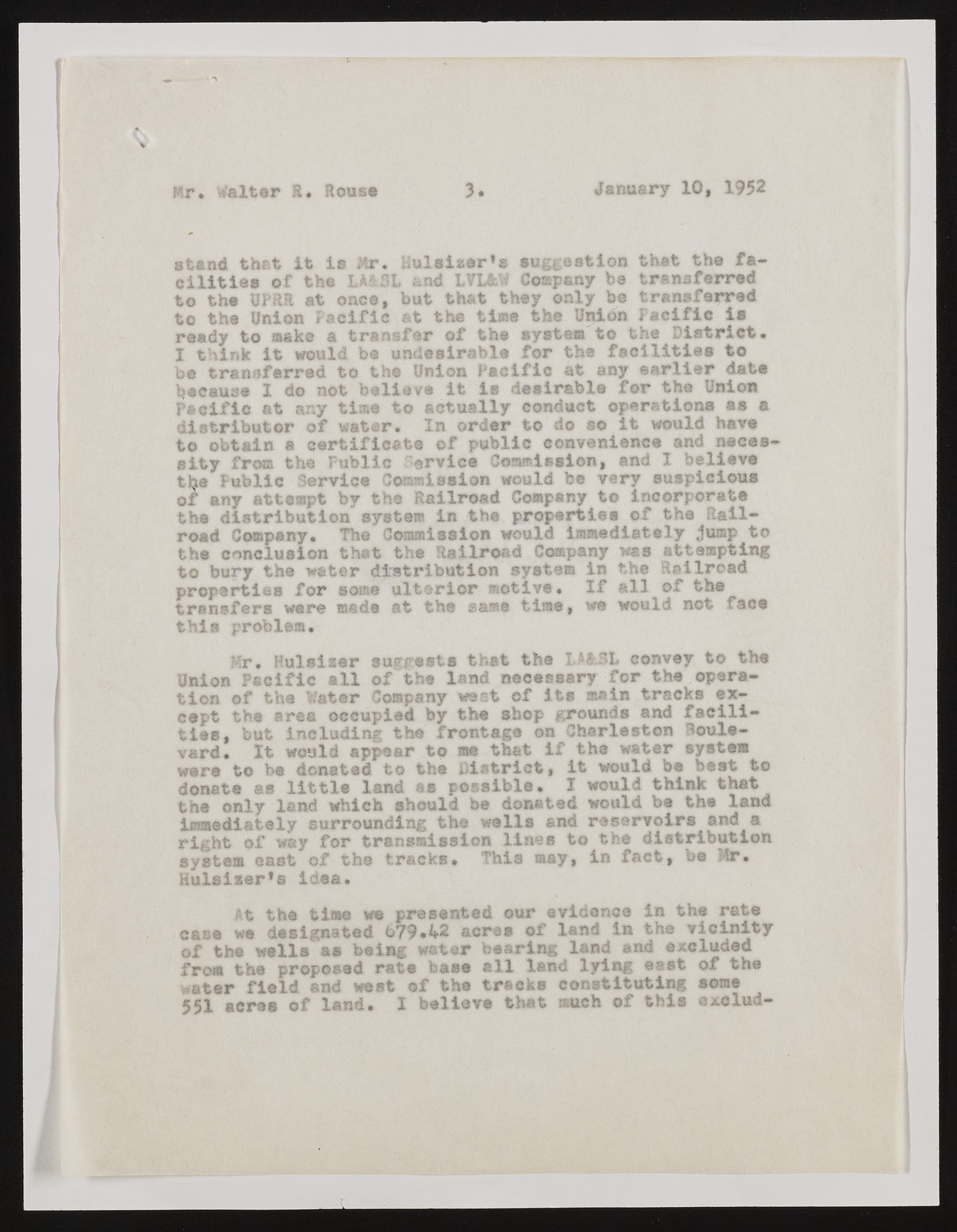Copyright & Fair-use Agreement
UNLV Special Collections provides copies of materials to facilitate private study, scholarship, or research. Material not in the public domain may be used according to fair use of copyrighted materials as defined by copyright law. Please cite us.
Please note that UNLV may not own the copyright to these materials and cannot provide permission to publish or distribute materials when UNLV is not the copyright holder. The user is solely responsible for determining the copyright status of materials and obtaining permission to use material from the copyright holder and for determining whether any permissions relating to any other rights are necessary for the intended use, and for obtaining all required permissions beyond that allowed by fair use.
Read more about our reproduction and use policy.
I agree.Information
Digital ID
Permalink
Details
More Info
Rights
Digital Provenance
Publisher
Transcription
tr. Walter E. Rouse 3 January 10, 1952 stand that it is Hr* Hulsiser's suggestion that the facilities of the LA&SL and ITLfcil Company be transferred to the UTRft at one®, but that they only fee transferred to the Union Pacific at the time the Union Pacific is ready to sake a transfer of the system to the District. I think it would be undesirable for the facilities to be transferred to the Union Pacific at any earlier date because 1 do not ballova it is desirable for the Union Pacific at any time to actually conduct operations as a distributor of water. In order to do so it would hare to obtain a certificate ©f public convenience and necessity from the Public Service Commission, and I believe tije Public Service Commission would be very suspicious of any attempt by the Railroad Company to incorporate the distribution system in the properties of the Railroad Company. The Commission would immediately ^uaip to the conclusion that the Railroad Company was attempting to bury the water distribution system in the Railroad properties for some ulterior motive. If all of the transfers were made at the same time, we would not face this problem. M r. Rulsizer suggests that the LAi-SI convey to the Union Pacific all of the land necessary for the operation of the Water Company west ©f Its main tracks except the area occupied by the shop grounds and facilities, but including the frontage on Charleston Boulevard. It would appear to ms that if the water system were to he donated to the District, It would be best to donate as little land as possible* I would think that the only land which should be donated would, be the land immediately surrounding the wells and reservoirs and a right of way for transmission lines to the distribution system cast of the tracks. This may, in fact, be $r. Eulslser*s idea. At the time we presented our evidence in the rate case we designated 679*4>2 acres of land in the vicinity of the wells as being water bearing land and excluded from the proposed rate base all land lying east of the water field and west of the tracks constituting some 551 acres of land. I believe that much of this exclud-

